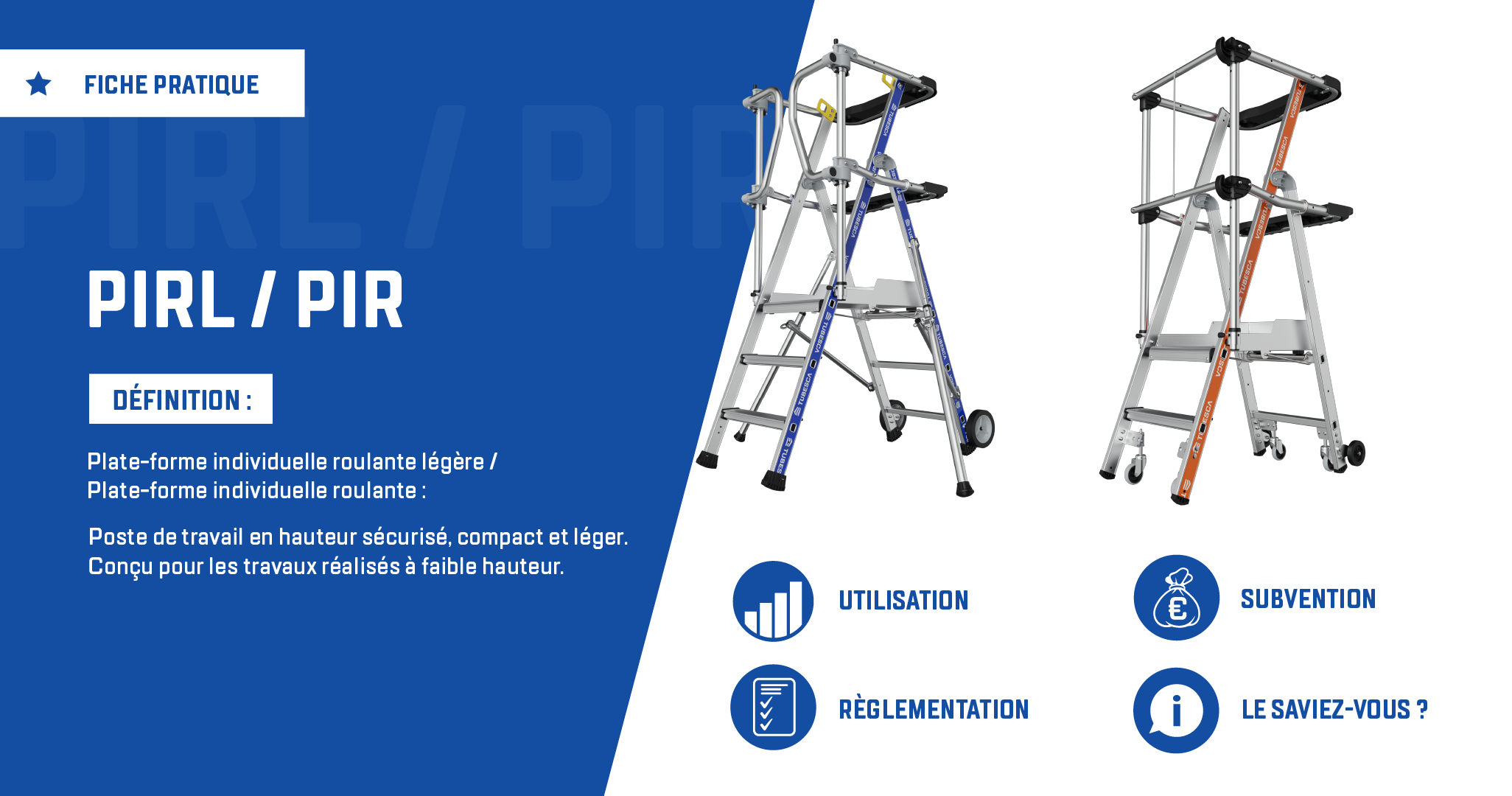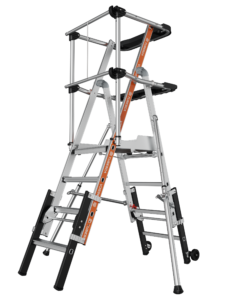- Pro tips
LIMP vs. IMP: What’s the difference?
Definition, standards, use: Everything you need to know about lightweight individual mobile platforms (LIMP) and individual mobile platforms (IMP). LIMP vs. IMP: Definition LIMP (lightweight individual mobile platforms) and IMP (individual mobile platforms) are height work equipment recommended by decree 2004-924. They include guardrails and toeboards to protect the workstation. What are their specific features? […]
Definition, standards, use: Everything you need to know about lightweight individual mobile platforms (LIMP) and individual mobile platforms (IMP).
LIMP vs. IMP: Definition
LIMP (lightweight individual mobile platforms) and IMP (individual mobile platforms) are height work equipment recommended by decree 2004-924. They include guardrails and toeboards to protect the workstation.
What are their specific features? LIMP/IMP are a type of equipment used for working at heights, designed for use by a single person. They include a means of movement, immobilisation, and access to a secured platform. Their two wheels are neither adjustable nor supporting in the working position. LIMPs are designed to be a step up from the stepladder. As for IMPs, they’re a development on scaffold towers for low heights.
Work platforms: What are they used for?
LIMP/IMP are used for one-off or regular tasks, carried out at low heights by a single operator. These tasks may be repetitive, or not.
Platforms are subject to European standard EN 131-7 and French standard PIR NF P 93352 / PIRL NF P 93353:
– Maximum operating load of 150 kg
– Workstation protection with guardrail and toeboards
Did you know?
Mobile platforms can resist tipping in typical working conditions, without requiring mooring to the construction or weighting. The resistance is ensured through stabilisers built into the structure in the wheeling and use position.
LIMP vs. IMP: How to choose
Depending on what you use it for, there are different characteristics to take into account:
- The scope of application: Finishing work (LIMP), structural building work (IMP),
- The working height: 3.50 m for LIMP or higher for IMP,
- The maximum height of the platform: 1.50 m for LIMP or higher for IMP,
- Equipment handling: Carried by hand (LIMP) or craned (IMP).
As a general rule of thumb, opt for LIMP for indoor work. Lightweight and extremely compact when folded, they’re easy to handle and can fit through openings and stairwells. Ideal for smaller indoor works, finishing work, cleaning, and maintenance.
Opt for IMP in complex and exposed environments: Highly resistant, they’re suited to outdoor use and indoor use in restrictive conditions (structural building work, electrical work, etc.).
Tubesca-Comabi LIMP/IMP Guide
> LIMP: Raptor (2 to 6 steps), Raptorscopic (3 to 4 steps), Veloce (2 to 6 steps), Sherpamatic (3 to 6 steps), Sherpascopic (3 to 4 steps)
> IMP: Raptor (7 steps), Raptorscopic (5 to 7 steps), Veloce (7 steps), Sherpamatic (7 to 8 steps), Sherpascopic (7 to 11 steps)
Subsidisation
Individual mobile platforms are often eligible for the TOP BTP subsidy in France: This grant is offered for the purchasing of products for access and working at heights, funding up to 50% of the total purchase cost of a LIMP/IMP.
Discover all our LIMP/IMP models in our catalogue. Got a question?







